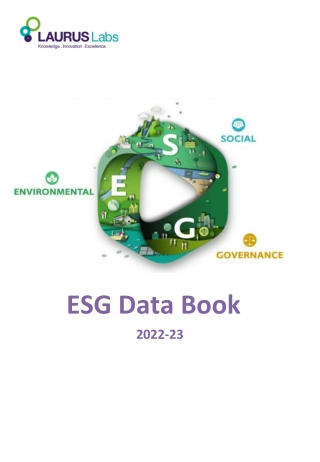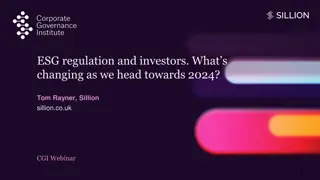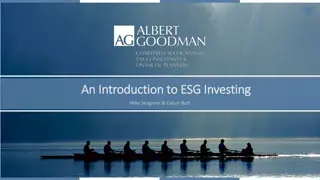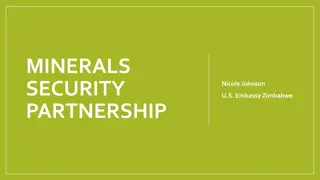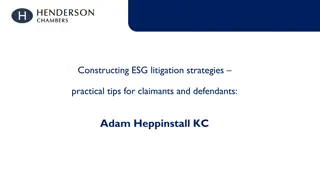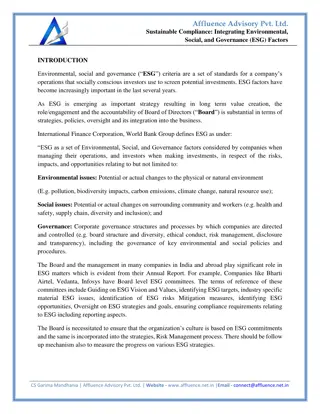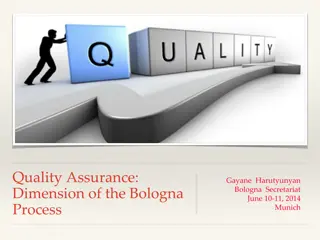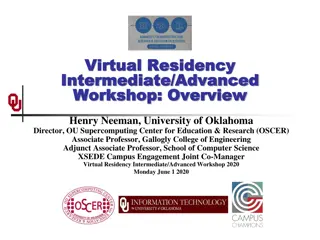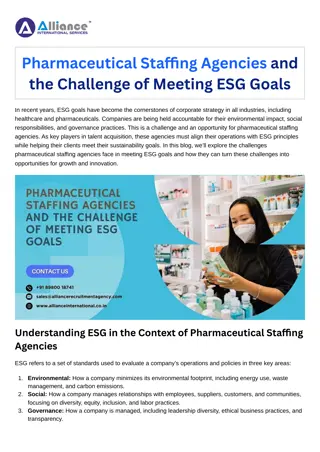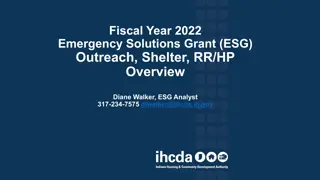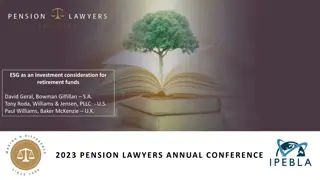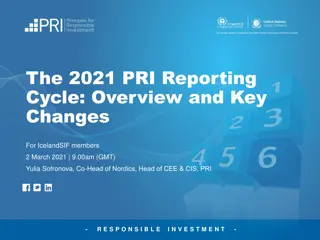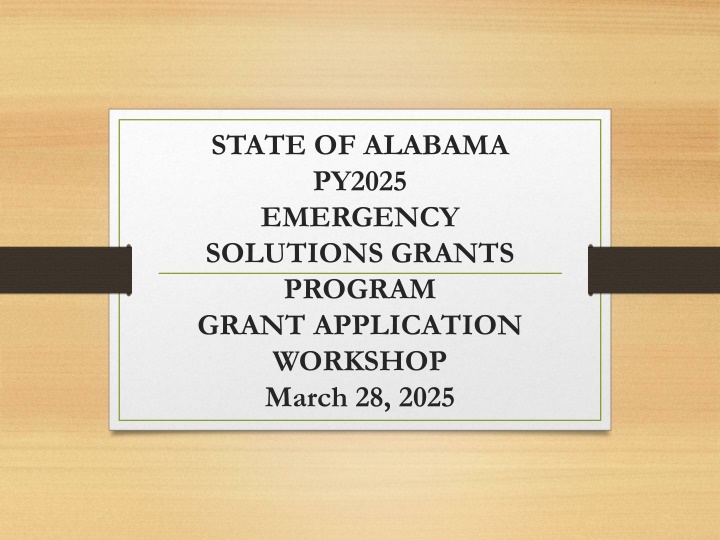
Alabama Emergency Solutions Grants Program Information
"Learn about the State of Alabama's PY2025 Emergency Solutions Grants Program, including eligibility criteria, fund distribution, and contact information for key personnel. Find out how to apply and important details about the grant application process."
Uploaded on | 0 Views
Download Presentation

Please find below an Image/Link to download the presentation.
The content on the website is provided AS IS for your information and personal use only. It may not be sold, licensed, or shared on other websites without obtaining consent from the author. If you encounter any issues during the download, it is possible that the publisher has removed the file from their server.
You are allowed to download the files provided on this website for personal or commercial use, subject to the condition that they are used lawfully. All files are the property of their respective owners.
The content on the website is provided AS IS for your information and personal use only. It may not be sold, licensed, or shared on other websites without obtaining consent from the author.
E N D
Presentation Transcript
STATE OF ALABAMA PY2025 EMERGENCY SOLUTIONS GRANTS PROGRAM GRANT APPLICATION WORKSHOP March 28, 2025
CONTACT INFORMATION Kathleen Rasmussen, Ph.D., Division Chief 334-353-0323 kathleen.rasmussen@adeca.alabama.gov Trent Williams, Special Programs Unit Chief 334-353-3409 trent.williams@adeca.alabama.gov
Program Supervisor Dave Veatch 334-353-0288 dave.veatch@adeca.alabama.gov
Website Resources https://adeca.alabama.gov/esg/ Presentation Slides Application Form Certifications Other Submission Forms HARD DEADLINE June 27, 2025, Noon Continuum of Care contacts Annual Action Plan
Action Plan Details the administration of funds State-wide Assistance Upgrade existing Homeless Facilities and Domestic Abuse Shelters Operations Essential Services Prevent Homelessness Re-House Homeless Persons
DISTRIBUTION OF FUNDS Approx. $2.7 million based on 2024 allocation Grant ceiling: $400,000 for single-jurisdiction service area $500,000 for multi-county service area Funds will be matched by the Subrecipient Funds will be allocated on the quality of applications received
ELIGIBLE APPLICANTS Local units of government: cities, towns, or counties Private nonprofit organizations Faith-based organizations
PRIVATE NONPROFIT ORGANIZATION Must meet the following criteria: Is a secular or religious organization described in section 501 (c) (3) of the Internal Revenue Code of 1986; Is exempt from taxation under subtitle A of the Code; Has an accounting system and a voluntary board; and Practices nondiscrimination in the provision of assistance
FAITH-BASED ORGANIZATIONS Can NOT use Grant Funds to: Engage in religious purposes or activities Discriminate based on religion or religious beliefs Rehabilitate structures used for religious activities
APPLICATION THRESHOLDS Applications will not be accepted if applicant: Is indebted to the state or federal government and no repayment arrangement is in place Has disallowed costs resulting from an ADECA review or audit and no resolution is finalized Has an open ESG Grant from 2023 or earlier (closeout documents, which need no corrections, are due on or before June 26, 2025)
APPLICATION RESTRICTIONS Applicant may not be listed as a second-tier subrecipient in another application. NOTE: A second-tier subrecipient may be listed as a second-tier subrecipient in multiple applications.
APPLICATION DEADLINE Mail or hand deliver one original and email one exact copy. Both the physical and digital copies must be received by 12:00 noon on Friday, June 27, 2025. See the addresses below. Alabama Department of Economic and Community Affairs ATTN: CED/Special Programs Unit 401 Adams Avenue, Suite 524 Montgomery, Alabama 36104 OR P.O. Box 5690 Montgomery, Alabama 36103-5690
APPLICATION DOCUMENTS Required Documents Failure to submit any of the required application documents will result in dismissal of the entire grant application from funding consideration. Other Documents Failure to submit any of the other documents will result in a deduction of two points per missing document from the applicant s total score.
REQUIRED DOCUMENTS Local unit of government applicants: Cover letter signed by chief elected official Resolution providing authorization to submit application assuming responsibility of total match requirement Maintenance of Effort Documentation, if applicable
REQUIRED DOCUMENTS Private nonprofit organization applicants: Cover letter on agency s letterhead signed by chairperson/president of the board providing authorization to submit application assuming responsibility of total match requirement (regardless of the source) IRS 4168C / IRS Determination Letter Form 990 (previous year s)
REQUIRED DOCUMENTS All applicants: Declaration of Debt explanation, if applicable Letter from CoC (regarding applicant s membership, use of the coordinated assessment system, and reporting in HMIS/comparable database) Sample Intake Forms (for each agency providing direct assistance)
REQUIRED DOCUMENTS Match Commitment Letters (on applicant s letterhead) Summary of Past Volunteer Hours/Donations Most Recent Annual Budget (for each agency providing direct assistance) Copies of Deeds, Cost Estimates, Appraisal of the Current Value of the Building (if applicable)
OTHER DOCUMENTS Private nonprofit organization applicants: Voluntary Board Member List Minutes of most recent Board meeting Letter 147C from the IRS
OTHER DOCUMENTS All applicants: SAM.gov Registration Emergency Shelter Insurance Documentation Audit and Audit Certification Copy of most recent audit In compliance with 2 CFR 200 Part F Audit Certification
OTHER DOCUMENTS All applicants: Indirect Cost Documentation Copy of approved Indirect Cost Rate Certification to Use 15% De Minimis Indirect Cost Rate, if applicable IRS Form W-9 (main applicant only) ADECA ESG Budget Forms Schedule of Spending
APPLICATION Section B Identification of Homeless Assistance Needs Applicant s Strategy to Address Homeless Problems Capacity and Coordination Continuum of Care (CoC) Participation Match Budget Schedule
APPLICATION B.1. Identification of Homeless Assistance Needs (20 points) What is your service area? Who are the homeless in your service area? What are the needs of those homeless persons, especially the unsheltered homeless? How many homeless persons/families were served by each agency during the last calendar year?
APPLICATION B.2. Applicant s Strategy to Address Homeless Problems (20 Points) What is your plan to serve the homeless or those at risk of homelessness? Quantify the specific types of services provided by each agency during the last calendar year. How many participants does each agency propose to assist?
APPLICATION B.2. Applicant s Strategy to Address Homeless Problems cont. (20 Points) What types of assistance does each agency propose to provide? Why are you serving this subpopulation of the homeless or those at risk of homelessness? Why aren t you serving other subpopulations that may have been identified?
APPLICATION B.3. Capacity and Coordination (20 Points) What types of programmatic and fiscal grant management experience do the applicant and second-tier subrecipient(s) possess? Provide the plan to coordinate and integrate ESG-funded activities with other programs targeted to serving homeless persons and with mainstream resources for which program participants may be eligible.
APPLICATION B.3. Capacity and Coordination cont. (20 Points) Provide the number of staff members for each agency that will provide assistance. For each agency that will provide assistance to participants, provide details of the staff members experience with service provision to the homeless or those at risk of homelessness.
APPLICATION B.4. Continuum of Care (CoC) Participation (20 Points) Length of CoC membership & level of participation CoC s strategies for serving the homeless Agencies alignment with the CoC s strategies Agencies use of the CoC s coordinated assessment system (coordinated entry)
APPLICATION B.5. Match (10 Points) Must be eligible and benefit ESG program participants Include Resolutions and donation letters Volunteer hours/donations must relate to ESG activities Establish a history of donations/volunteer hours
APPLICATION B.5. Match cont. (10 Points) May be provided from federal, state, local, or private sources unless: The funds are ESG funds from other fiscal years Program rules prohibit the use of those funds as match ESG is used as match for the other source
APPLICATION B.6. Budget (10 Points) Budget narrative should clearly explain each activity Detailed description of costs for each activity Make sure proposed costs are eligible for ESG the proposed activity. Provide a detailed budget listing all funding sources
SECOND-TIER SUBRECIPIENT BUDGET
SCHEDULE B.7. Schedule Timeline/Flow-chart showing: Schedule of each project activity Starting and ending dates for each Up to 21 months Percentage of spending at 30%, 50%, and 70%
ELIGIBLE ACTIVITIES 1. Administration 2. Street Outreach 3. Emergency Shelter 4. Homelessness Prevention 5. Rapid Re-Housing 6. Homeless Management Information System (HMIS)
1. ADMINISTRATION The State shares the Administration funds with the ESG subrecipients. Only the applicant may request funds for administration. Up to 4% of the applicant s budget may be used for administration. (This also applies to Match)
1. ADMINISTRATION Administration does not include staff and overhead costs directly related to carrying out street outreach, emergency shelter, homelessness prevention, and rapid re-housing activities, as those costs are eligible as part of those activities.
1. ADMINISTRATION Eligible Costs: General Management/Oversight/ Coordination Administrative services performed under third party contracts or agreements, including general legal services, accounting services, and audit services Staff salaries, wages, and related costs of staff engaged in eligible program administration activities
1. ADMINISTRATION Eligible Costs: General Management/Oversight/Coordination Travel costs incurred for monitoring of second-tier subrecipients Other costs for goods and services required for administration of the program, including rental or purchase of equipment, insurance, utilities, office supplies, and rental and maintenance (but not purchase) of office space
1. ADMINISTRATION Eligible Costs: Training on ESG Requirements Costs of providing training on ESG requirements and attending HUD-sponsored ESG trainings Environmental Review Costs of carrying out the environmental review responsibilities under 24 CFR 576.407
2. STREET OUTREACH Assistance provided must serve unsheltered homeless persons who are neither willing nor able to access housing, emergency shelter, or an appropriate health facility.
2. STREET OUTREACH: ELIGIBLE COSTS Eligible Costs: Engagement Case Management Emergency Health Services Emergency Mental Health Services Transportation Services to Special Populations
2. STREET OUTREACH: ENGAGEMENT Initial assessment of needs and eligibility Providing crisis counseling Addressing urgent physical needs (meals, blankets, clothes, toiletries) Actively connecting and providing information and referral Cell phone costs of outreach workers
2. STREET OUTREACH: CASE MANAGEMENT Using the centralized or coordinated assessment system (coordinated entry) Initial evaluation/verifying and documenting eligibility Counseling Developing/securing/coordinating services
2. STREET OUTREACH: CASE MANAGEMENT Helping obtain federal, state, and local benefits Monitoring/evaluating participant progress Providing information and referral to other providers Developing an individualized housing/service plan
2. STREET OUTREACH: EMERGENCY HEALTH SERVICES Providing or helping participants obtain appropriate emergency medical treatment Assessing participants' health problems and developing treatment plans Assisting participants to understand their health needs Providing medication and follow-up services
2. STREET OUTREACH: EMERGENCY MENTAL HEALTH SERVICES Crisis interventions Prescription of psychotropic medications Explain the use and management of medications Combinations of therapeutic approaches to address multiple problems
2. STREET OUTREACH: TRANSPORTATION Transporting unsheltered people to emergency shelters or other service facilities Cost of staff and participant s travel on public transit Mileage allowance for outreach workers to visit participants Purchasing/Leasing vehicle
2. STREET OUTREACH: SERVICES TO SPECIAL POPULATIONS Special populations: homeless youth; victim services; persons living with HIV/AIDS Engagement Case Management Emergency Health Services Emergency Mental Health Services Transportation
3. EMERGENCY SHELTER Eligible Costs: Essential Services Renovation Shelter Operations Assistance Required under Uniform Relocation Assistance and Real Property Acquisition Policies Act of 1970 (URA)
3. EMERGENCY SHELTER: ESSENTIAL SERVICES Eligible Costs: Case Management Child Care Life Skills Mental Health Services Education Services Employment Assistance and Job Training

